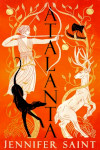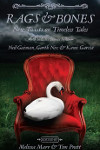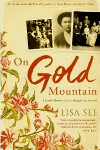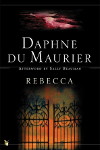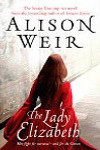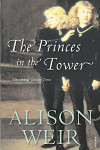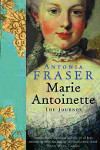Maile Meloy – Both Ways Is The Only Way I Want It
Posted 26th October 2010
Category: Reviews Genres: 2010s, Angst, Short Story Collections
1 Comment

A thin volume of short stories based on desire.
Publisher: Cannon & Gate
Pages: 219
Type: Fiction
Age: Adult
ISBN: 978-1-84767-416-6
First Published: 2010
Date Reviewed: 8th October 2010
Rating: 3.5/5
There are several stories in this book, each taken from various newspaper and magazine publications where Meloy has had her work showcased.
Ever since her fantastic debut, Liars And Saints, Meloy has favoured the publication of short stories over novels. Her second novel, which was a different version of Liars And Saints and set said book as a dream, was poorly received by her readers, and is out of print. It seems the short story is the way to go, however I can’t help but think that Meloy’s light is an artificial one because these short story collections are based on work already published.
It’s no secret that I love Meloy’s writing, she has a truly unique style: at once both simple and very detailed. She is so unique that selecting her work from a box of many papers would be easy. But something that she doesn’t do very well is the climax. Meloy’s style is breezy and she favours short dips into someone’s life, leaving them before she’s fully made her mark. Because of the writing style you can find yourself engrossed quickly so it’s a shock when each story ends. Although her novels are more involved still there is that element in them.
I do take issue with one of the elements she always employs, and that is sex. I can’t say I’ve read anything by Meloy where there is a good solid relationship and healthy sex; she is fascinated by infidelity, relationships bordering on incest (by “bordering” I mean cousin with cousin, although when it happens those involved believe they are uncle and niece), and the idea of orgies. While I understand that may be her preference it doesn’t give me a very good impression of her as a person; and furthering that there is something she always omits – Meloy doesn’t like to have people apologising and admitting what they’ve done when they’ve hurt people. And the whole infidelity idea is used in pretty much every story here.
This becomes a more general problem when you realise that most of the stories are actually the same. There are one or two that don’t expressly deal with sex (in fact one is about a grandmother and very funny) and these become the two that stand out. Unfortunately Meloy is in a rut where she’s using the same formulas and the same structures repeatedly, just changing minor details to make them appear different.
You may be wondering why I’ve given the book a good rating after all this. Because she is so adept at storytelling in the way she uses words, although the content may be uncomfortable one can’t help but still be enthralled. Meloy is a second novel genius waiting to happen. Now she just has to find her subject.
Both Ways Is The Only Way I Want It is the perfect title for this collection. I’m not sure I’d recommend reading it all in one sitting but it is a good example of literary fiction that will delight the reader in you and cause the rest of you to think.
Related Books
Molly Roe – Call Me Kate
Posted 14th October 2010
Category: Reviews Genres: 2000s, Historical, Political
2 Comments

A young girl secretly takes on the rebellion before the war.
Publisher: Tribute Books
Pages: 148
Type: Fiction
Age: Young Adult
ISBN: 978-0-9814619-5-3
First Published: 2008
Date Reviewed: 24th September 2010
Rating: 3/5
When I was asked to join the blog tour for Call Me Kate, saying “yes” was easy. Having read recently about the creation of the United States, but knowing nothing about the issues faced by the Irish, the idea of adding to my knowledge interested me greatly.
Katie McCafferty lives with her family in the newly created United States, but their Irish heritage does not permit them the same freedoms granted other Americans, and they are forced to live in a community with other Irish families, mining for coal. The mines are dangerous places – the owners not caring if they lose workers to avalanches – and slowly the Irish people have come to form unions. Those in power want them to join the war but why should they when they are treated as second-class citizens?
The first thing that struck me about Call Me Kate was the chapter list – yes, something before the story! Roe has made a big effort to title all chapters with words beginning with “C”. There are only three that don’t begin this way but they do have a word beginning with the letter somewhere in their title. For a book with twenty-two chapters I reckon that’s pretty damn awesome.
The book is very short and unfortunately this means that a lot of detail is invariably missed out. Dialogue is preferred in favour of description and scenes move from one to the other without time to get your bearings, the chapters themselves don’t feature the subtle gaps that most books do. All this means that the story moves far too quickly, never staying in one place long enough, it’s as though author only had a couple of days in which to write it. The narrative is at times melodramatic, caused in part by the plenty dialogue. Because of Katie’s age the scene where a few tragedies happen at once seems unrealistic and more akin to a soap-opera storyline, no matter how realistic it actually is.
But despite this the novel manages to pack some great issues into its slim width. It brings to mind issues that were at the forefront of Lisa See’s On Gold Mountain, where the reader can’t but find the whole set up of infant America ridiculous. The Irish were treated as nasty immigrants, but wasn’t the majority of the population made up of immigrants? And there was a lot of awful prejudice against the native people but it’s absurd how the white Americans, a great number not being many generations from born and bred British themselves, thought that the Irish shouldn’t be allowed. Many of them probably had Irish ancestors.
Something that really makes you think is the opinion of the Irish, and this links in to the way the Americans treated them. In many respects you have to concede that the Americans had a point in wanting to keep the Irish out – because the Americans had got there first and you can understand that they might have been worried about resources being taken from them (consider the current issues of immigration in Britain). However, the Americans treated the Irish like dirt and had no intention of giving citizenship to those who fought for the country – so it is with that said that the situation was wrong. And you can’t forget that previously the Americans had taken the land from the natives anyway.
Roe’s character, and the narrator of the book, is a fourteen-year-old female. Katie is a strong character and Roe has portrayed her brilliantly. You must approach this book remembering her age because it atones for a lot of the simplistic style of writing in the book. Having a female as the main character also makes the story more fictional and thus less open to dispute about historical accuracy because of the point of view allowed by society for Katie to see. The problem with a female lead in this situation refers to that point of view – you don’t get to read about as much of the action and atrocities that went on. Of course you do read about them because Katie sees the wounded, hears the news, but it feels as though Roe’s research hasn’t been able to flourish. While Katie is a great character, Roe appears to have a lot more information to impart, and I for one would love to read a book by her written about the same era and from a character possessing more first-hand experience, a character like Con, for instance.
I couldn’t help but compare Call Me Kate to Celia Ree’s Sovay. In both the main characters are strong but Katie definitely shines over Sovay for her more realistic qualities.
Something that I hope Roe will continue to focus on, because she can be very inventive, is the use of similes. As an example, here is a quote that stands out:
I was as jumpy as a rasher of bacon on a hot griddle.
The book improves in the last several pages, including more descriptions, but the end is too sudden. As a debut Call Me Kate is good, but Roe needs to work further on the difference between compiling fact and being a novelist because while it’s in recounting historical fact that her talent lies chiefly, there’s no reason why her creations in future should not be first-rate.
I received this book for review from Tribute Books.
Related Books
Charlotte Brontë – Jane Eyre
Posted 8th October 2010
Category: Reviews Genres: 1840s, Drama, Mystery, Romance
3 Comments

When I opened Jane Eyre I don’t know what I expected, Austen, perhaps – humour, entertainment, but an all too familiar tale of an emboldened young woman making her way in a society that was not her own. I didn’t expect what I actually found.
Publisher: (Numerous, but I’d wager Vintage would be a good one)
Pages: N/A
Type: Fiction
Age: Adult
ISBN: (Vintage’s is 978-0-099-51112-0)
First Published: 1847
Date Reviewed: 1st October 2010
Rating: 5/5
Not long ago I was in the bookshop buying a copy of Pride And Prejudice for my mother (who, I lament, has still not read it). The assistant said it was a great book but then proceeded to recount the glories of the Brontës. I listened in earnest as I intended to read Charlotte Brontë’s work next. The sisters were darker, he said, Austen was too light humoured. He asked his colleague, who was browsing the shelves on this mid-week slow day, for her opinion on who was better. Austen, she said. My assistant said I should read Brontë. How right he was in his pronunciations.
Now one could say that I have missed the boat by over a hundred years in writing this review, but, and this is something I believe I touched on in my review of Pride And Prejudice, there is the idea that it’s ok to review a classic. It is important, I feel, that each generation brings to the book’s reputation their own reflections on it as surely this routine will enable those of a particular generation to decipher how this book might appeal to them. Without modern day discussion, or indeed simply educational study, all a potential reader has to go on is ancient reviews written by people of a different time; it is by updating opinion that future readers will see for themselves how the book might be accepted by them in a way that is appropriate for their own time.
I suppose I should stop there with my views on classical literature and turn specifically to the subject at hand, so here is a basic plot summary:
When Jane Eyre was a child she had no one, at least no one who gave her the love and caring attention she needed. Growing up in her aunt’s house she was bullied and treated with disdain despite her obedient ways. Sent to a boarding school Jane later flourished, but assuming the role of a teacher at the same school could only hold her interest for a short time. In seeking further employment, Jane alighted at Thornfield Hall. Mr Rochester, her employer, is a peculiar one – cryptic, seemingly forgetful, impulsive, and secretive. But how can he demand her full attention when the house, beautiful though it is, appears to be haunted by secrets?
Jane Eyre is a story that, for the most part, is ever moving and shifting between genres. It is so clear in its sections that one can point out the different “acts” with little difficulty. And Charlotte (as there were three Brontës I will refer to the eldest as such) doesn’t stick to one or two themes either, the book contains a plethora, and their subjects are such that some are just as relevant in their original sense today.
The story is told as a memoir, directly to the audience. In the first person, for Jane hasn’t written a diary, she addresses the reader in an interactive way, asking them questions and for their opinion, as well as accurately guessing what they might be wanting to know. Be sure that whatever you are thinking, Charlotte has realised and will inform you of accordingly. Many a time I believed I wouldn’t get an answer to my query and then not only did Charlotte bring it to the fore, she had Jane speak to me in person.
A new chapter in a novel is something like a new scene in a play; and when I draw up the curtain this time, reader, you must fancy you see a room in the George Inn at Millcote, with such large figured papering on the walls as inn rooms have; such a carpet, such furniture, such ornaments on the mantelpiece, such prints, including a portrait of George the Third, and another of the Prince of Wales, and a representation of the death of Wolfe. All this is visible to you by the light of an oil lamp hanging from the ceiling, and by that of an excellent fire, near which I sit in my cloak and bonnet; my muff and umbrella lie on the table, and I am warming away the numbness and chill contracted by sixteen hours’ exposure to the rawness of an October day: I left Lowton at four o’clock a.m., and the Millcote town clock is now just striking eight.
A comparison I will make now with Jane Austen. Although I love Austen’s work it cannot be denied that she has a tendency to go into far too much detail than is required, forming incredibly long sentences wherein one can easily become lost. There is no such worry in Charlotte’s writing. Except perhaps during a specific section, which I will come to in a minute, Charlotte never pauses to provide superfluous description. The story, as said before, is ever moving. Charlotte knows her reader, she knows that (at least in her time) they are well versed in her world, for it is a real one, and that they don’t need to read about it apart from the descriptions of the made-up situation. I would say that it is quite possible that this style of writing is what enables Charlotte to bring in so many different elements of story to the book because she doesn’t have to worry about spending time – and pages, thus not becoming long-winded – on description. If you require definite evidence of Charlotte’s quest to remove unnecessary information, you only need look several pages in where Jane says that she is leaving out eight years of life from her account because they aren’t interesting enough to speak of.
Every setting in the book is beautifully lamented upon and a pleasure to create in memory and imagination. Though the book may begin shrouded in grey, Charlotte later moves it into hues of green, yellow, and white. She uses time of day wisely, contriving with the weather to create her own version of pathetic fallacy.
There was just one area that I found disappointing, the part where Jane comes into certain social arrangements in a village. I wished fervently that it wouldn’t be a cliché, that it would be different – but it wasn’t. I do not understand how someone so brilliant and able a storyteller could fall to such boring and coincidental devices. I failed to see, for that space of time, the genius reported by Virginia Woolf – a quotation displayed in glory on the back cover of my copy of the book.
The cook hung over her crucibles in a frame of mind and body threatening spontaneous combustion.
The characters are first-class. Although, where classic literature is concerned, Austen’s Darcy may be more famous, of more note is surely Charlotte’s Edward Rochester. Rochester is a fine creation; funny, sarcastic, and very much a speedy speaker; few were the times when I could imagine him speaking any slower than quickly. And it is in part because of his backtracking and contradictions of his words that he is so full of colour – you may not find out all that much about his interests but it is clear that here is a well-rounded person, no matter how gloomy he may aspire to be at times. Several of the quotations I made note of for their humour come from his dialogue; as an example, his supposing that you might not think of hating someone you already despise. With these in mind I would like to reference a scene that particularly stood out for me, that of the gypsy’s visit to Thornfield Hall. Make no mistake, it goes on for several pages but it is here that Charlotte first demonstrates true comedic genius.
Jane Eyre herself is just as fantastic a character, but one can overlook her qualities sometimes due to the fact that she is the eternal focus, being the narrator. She is as appealing and relevant today as a character newly penned in the 21st Century.
The writing is superb. So differently to Austen, Charlotte writes in a way that is very near to how we write today, save for perhaps her fondness for colons and semi colons, which she includes as if she earned a pound for each addition. Because of the style there is no need to study the text at all in order to make out her meaning, and so in style at least the book remains an easy read. However I would like to point out that there is a substantial amount of French used in the book. Charlotte has chosen her words well and included in most sentences hints as to the overall meaning, as long as you have a bare basic knowledge you should be able to get the gist. My own GCSE education from years ago sufficed.
The love story is perfect, and it is during the scenes between the anguish-ridden couple that dialogue takes over, as does of course interesting conversation (think of the character descriptions provided) and, because the dialogue is generally balanced between the two these are the scenes that flow quickly. The only time you really realise just how long the book is is once you get to the end of one of these dialogues and turn the page to see line upon line of description in preparation for the next sequence.
One of the ways in which the book amazes me is the ending, and looking back on it I can see how Charlotte was not making it into the kind of scene you might have expected and would’ve expected had it been written by someone else. Everything points to her being a person open to modern ideas. That doesn’t mean she is perfect, she was of course a product of her society and so some issues in the book you have to read remembering that, but she was a forward thinker and far away from being narrow-minded, by both the standards of her time and now.
Charlotte Brontë is a master storyteller and although I’m yet to read her other work I have a feeling this will remain my favourite. I have tried my best in this review but a summing up could never really explain just how and why this book is so incredible. I heartily recommend it to one and all with no exceptions.
Related Books
Rosy Thornton – The Tapestry Of Love
Posted 26th September 2010
Category: Reviews Genres: 2010s, Domestic
Comments Off on Rosy Thornton – The Tapestry Of Love
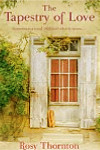
Moving to the mountains may be the idea for someone seeking lone time but it’s not necessarily the case that that time will remain.
Publisher: Headline Review (Hodder)
Pages: 339
ISBN: 978-0-7553-4556-4
First Published: 2010
Date Reviewed: 22nd September 2010
Rating: 3.5/5
I’d been wanting to read The Tapestry Of Love ever since I first saw the cover; the photo was beautiful and the historian in me was captivated by the word “tapestry”. So when I received an email from the author, offering it to me for review, I could only say yes.
After several years as a divorcee, Catherine decides to up sticks and move to an almost deserted area of France, buying a house complete with orchards and beehives. She comes to love the area and it’s people and makes use of her skills in sewing and tapestry to aid the homes of those around her. But a few events may later give her cause to rethink her life and work out what she really wants.
I generally have a really hard time getting into stories from the first page, and even though it happens a lot – that I’m disconnected for a few turns of the leaves – I’ve never got used to it and let it be. So I was happy when, upon opening Thornton’s book, the first sentence wasn’t just good, but very good.
Thornton begins her tale with “Never in her life had Catherine Parkstone imagined so many sheep”, which provides so much information straight away; we have the main character’s name, and a good sense of her location. We also have reason to read on. The story is split into three parts and Thornton uses this event of moving sheep again, in the second part, to illustrate the change in Catherine’s mind, how she’s adapting to her new lifestyle.
And it’s in writing that Thornton excels. She has chosen a relaxing story for which she can concentrate more on that often recounted point “don’t tell, show” and goes into meticulous detail about Catherine’s location so that it’s impossible not to be able to imagine it perfectly. The book is slow moving, the kind of slowness that enables you to feel you can really spend your time on it and take it all in. It demands your attention when describing but otherwise you’re very much permitted to pull up a chair to the table of Patrick Castagnol and nibble at the cheese provided with homemade wine. Because of the book’s setting and Catherine’s employment there is also a lot to learn for someone unknowable in arable farming (such as myself) and likewise much enjoyment for those who perhaps spend their own time working the land.
Not exactly surprising, considering the book’s title, there is a lot of information here about tapestry. Being more of a knitter than a sewer I must admit that for me sometimes the details became too much but for another they would be a delight.
There is a big difference between the scenes outside and the scenes taking place at one of Catherine’s neighbours’ houses. It is outside where the descriptions take president – the information about weather, the growing of the crops, the time to reflect by oneself. Inside it is all about dialogue, social interaction. This means that you are likely to prefer one lot of scenes to the other but because both are given equal time this is never a problem.
Something which took me a while to realise is why there were so many descriptions, because in places I did find the book easy to put down. I realised that it is where Catherine is on her own that she is reflecting on her surroundings and although that might be obvious it occurred to me that when I am alone I will often do the same, thinking the same things as I did the last time I was alone, looking out the window to judge the way the clouds are moving. Catherine’s thinking and Thornton’s descriptions serve to show how one has time to think about things like this when alone and even more so in a place where life is less busy. Looking at it from where I live I had to remember to change my mindset and remember how life is slower in the countryside.
And so when Catherine is invited to dinner the descriptions give way to dialogue. The host of secondary characters are great to read about, there is a similarity between them due to livelihood but each bring their own personality to the story. When Catherine’s family turn up on the pages there is that complete difference shown between rural life and city chaos and I can’t but wonder how much Thornton has brought her own experiences into the book because she writes it all so well.
Love, you say? Indeed, there is love in this book and it runs subtly throughout the story for the most part, but it’s discernible to the reader.
In writing The Tapestry Of Love, Thornton has presented the perfect story for a rural dweller and a challenge of sorts for a citizen of the city being that the latter must leave their faster-paced life at the cover of the book and take off their shoes before entering. It is a really rural book that will appeal to anyone seeking a getaway without the air-travel price tag, and a way of becoming completely absorbed in an idyll.
Beware if you’ve been considering escaping to the country. This book will give you ideas aplenty.
I received this book for review from the author.
Related Books
None yet
Alison Weir – Innocent Traitor
Posted 21st September 2010
Category: Reviews Genres: 2000s, Historical, Political
Comments Off on Alison Weir – Innocent Traitor

A brilliant re-telling of a life that other lives conveniently forgot.
Publisher: Arrow Books (Random House)
Pages: 404
Type: Fiction
Age: Adult
ISBN: 978-0-09-949379-2
First Published: 2007
Date Reviewed: 16th September 2010
Rating: 4/5
Lady Jane Grey, the great-niece of Henry VIII, was executed on 12th February 1554. A puppet at the hands of her elders, she was abused by her parents and shown little care all her short life, being set up as queen against the rightful succession for the welfare of those very people who abused her. She “ruled” as queen for nine days having been forced to take the title by her power-driven father-in-law, before being arrested and made to suffer the pain of waiting while her second-cousin, the rightful queen, attempted to have her set free.
Weir has the story narrated by various people, those associated with Jane in some way, and of course Jane herself. Weir uses this device in order to give full details of what was happening so that you hear the story from different view points and can gather a lot of the evidence avaliable from different sources. Where Jane’s information is lacking Weir switches to her nurse, and where the nurse is stuck at home with her mistress Weir turns to the Dudleys.
There is a single point that I find cause for debate with, and it is not so much to do with the story as the author herself so I will deal with it first. Because much of Jane’s life was included in those of Katherine Parr and Elizabeth I’s, much of the narrative is very similar to that of Weir’s later book, The Lady Elizabeth (which I do not hesitate to admit that I read first), and also her non-fictional account of the heirs of Henry VIII, Children Of England. In literal terms this could not be helped and it is understandable that, being a lover of Tudor history, Weir would want to write about all three women, but the stories are too similar. So the question is, was it a good idea for Weir to produce three books that, in part, deal with the same subject? The case for the books is that the accounts are each told from different points of view, so in that way to read all three means you gain a very good understanding of events. The case against is that it reads a bit like a cut and paste job. Weir hasn’t reused the same phrases but the problem is that for the most part she may as well have because of the similarity.
It’s difficult to review objectively a book that deals with a very real and very terrible subject, so it’s just as well that Weir has produced a book that had me angry for good reason, and emotionally involved. As Weir reminds us, Mary was not disposed to kill Jane but when the Spanish ambassador said that her husband-to-be would not go to England unless she did, she relented. It’s horrifying to read, because even if the dialogue of the scene is fiction the basis is factual. It’s abhorrent to think that Mary put her husband-to-be before Jane’s life even if you can understand somewhat that she was afraid that to lose him would mean no marriage or children from her; because Mary didn’t want to lose the power to change the faith back from Protestant to Catholic. We all know that in truth Mary was an incredibly mislaid Catholic for believing Protestants needed burning, but the case of Jane versus Catholicism is just disgusting. Unfortunately it happened and there’s nothing we could have done about it. And all that for a man who was constantly unfaithful, uncaring, scheming, and evidently only Catholic in name.
And religion is something you definitely find yourself thinking about, towards the end of the book especially. The monologues regarding religion demonstrate the lack of thought both denominations had regarding the ways to God. Both sides consider themselves the true faith but did either really have a right to the claim? In essence very few truly practiced what they preached, and it wasn’t just a case of being lax in their Christian duties.
Something Weir causes you to do is re-assess Guilford Dudley. She tells you about the cruel ways in which he treated Jane, which may or may not be true but if not certainly would have mapped to other ways, and then shows his remorse. Guilford was unfortunately a product of his parents and it took the threat of death to change his actions towards Jane. In Guilford and Jane we see where a path has forked – Jane has dealt with her neglectful parents in a mature manner, whereas spoiled yet subtly neglected Guilford is a mess.
As she does later, in The Lady Elizabeth, Weir peppers the text with lots of factual bites, but you can tell in the way that it’s done, like dialogue, that Weir wants to impart as much factual knowledge as possible. This the book read more like a non-fiction so that, effectively, what you’ve got here is a factual book disguised.
Weir takes the chance, while the story is less harrowing, to inject some humour into the it to lighten the mood, but she never strays from fact which means that the laughs you will find are ones the people of the time would also have shared. For example, Henry VIII wanted to annul his marriage to Anne of Cleves post haste because he found she smelt bad and was overall unattractive to him – but he was very upset when she agreed without pause that that was a good idea. It’s also fun to read the description of Jane Seymour by Frances Brandon, whether factual or not, who describes her as “that pale witless milksop”. In addition to these snippets you get to hear what the servants thought of their masters, and of course as they were actually normal people (for can you really say the sheep-like nobles with their disloyal ways would make preferable companions?), it’s very interesting. The servants were the satirical reporters of the day.
Children are often head strong and inclined to speaks their minds, and perhaps none more so than the young kings of old. Although King Edward VI is part of the background cast, Weir provides through him a very good source of the nature of privileged children in those times, including all the thoughts a nine-year-old boy would have given his thirty-year-old sister regarding the redemption of her soul. Of course the young king wasn’t always obeyed, and in fact had a tendency to be stroppy.
I know people speak in hushed whispers of young brides dead within a year of their wedding, or of mothers of large families cruelly taken from them.
Speaking of children, Weir doesn’t shy from providing accounts of childbirth, indeed there are at least three included in the book of varying success. Childbirth was fraud with danger in Tudor times and it makes you think how far we’ve come, yet also reminds you that many places in the world still suffer, which is crazy really because medicine has come so far.
Weir’s style of writing is compelling without being difficult to put down for a while. In my opinion her best moment is in the final pages where she moves between the point of view of Jane and her executioner. But she makes a few errors that should have been picked up on, most noticeably saying that baby Mary Grey went to bed with Katherine while they were in Oxford – after saying Mary had been left at home. This isn’t a problem however, and it’s perhaps a reason to be thankful that she made the error there where historical fact wasn’t imperative to know.
In a bad time and a bad place there lived many awful and self-righteous people who would give their daughter’s happiness for their own promotion. Lady Jane Grey’s story is an all too often but very important one and Weir has produced a work worthy of the time you may want to dedicate to her.











